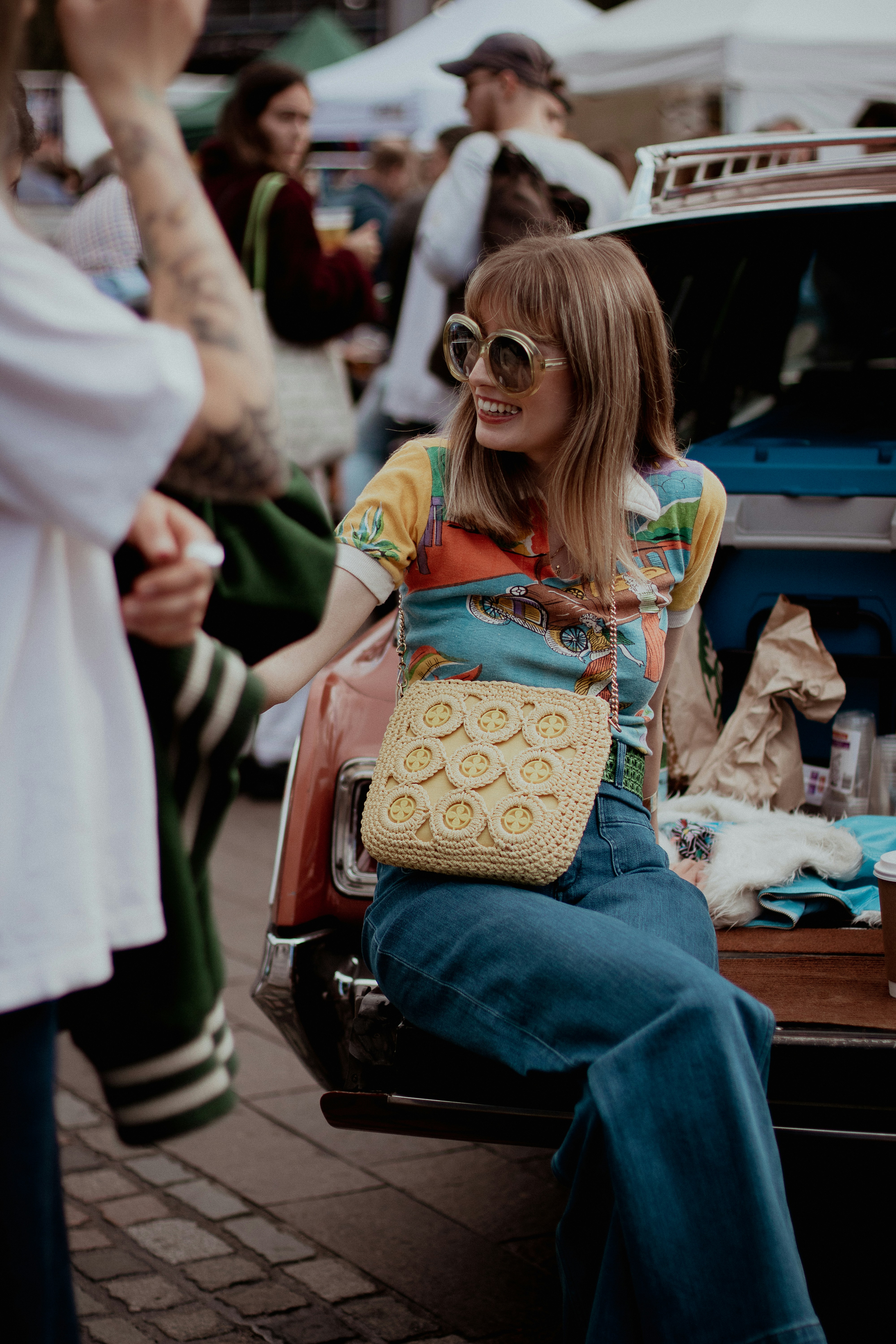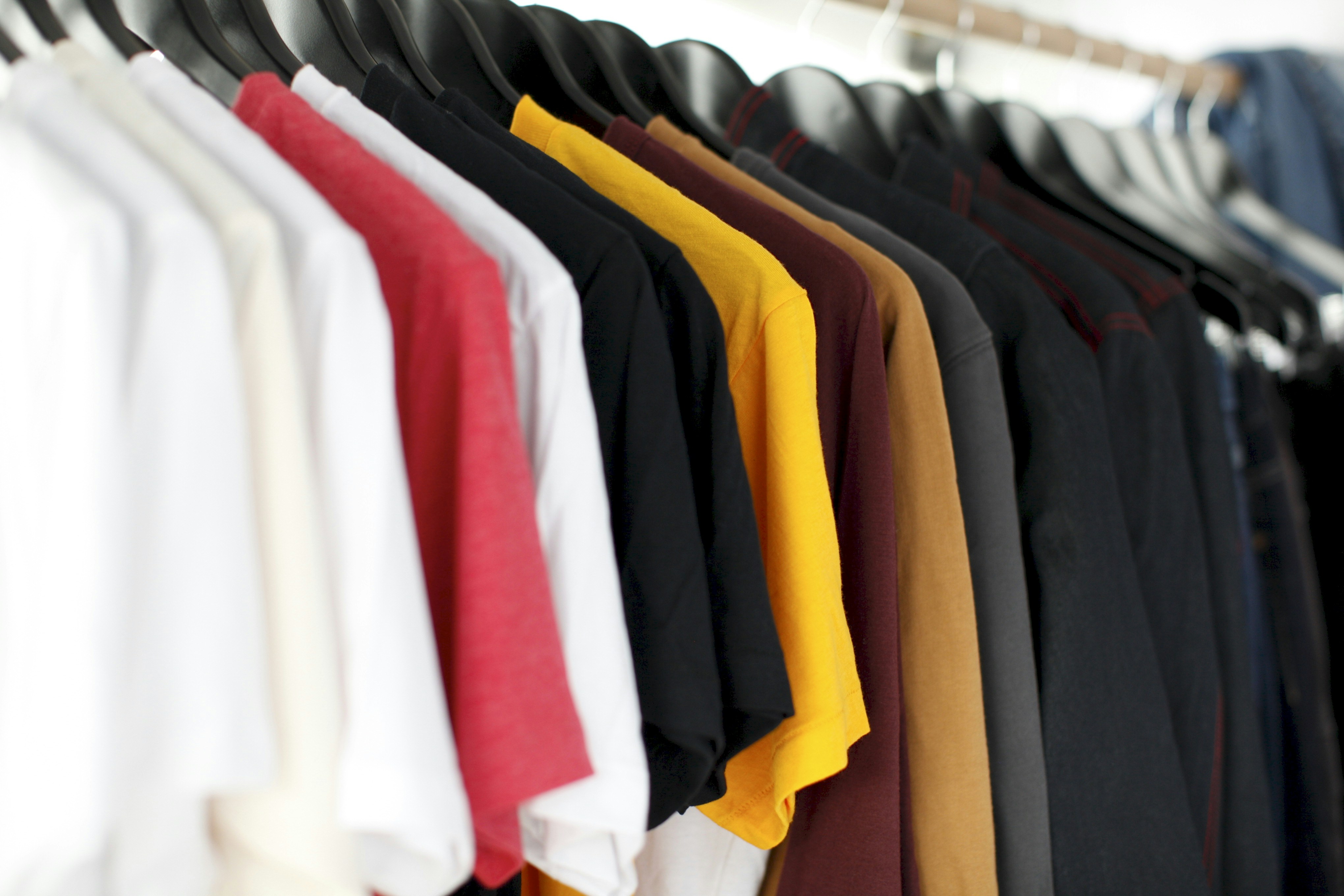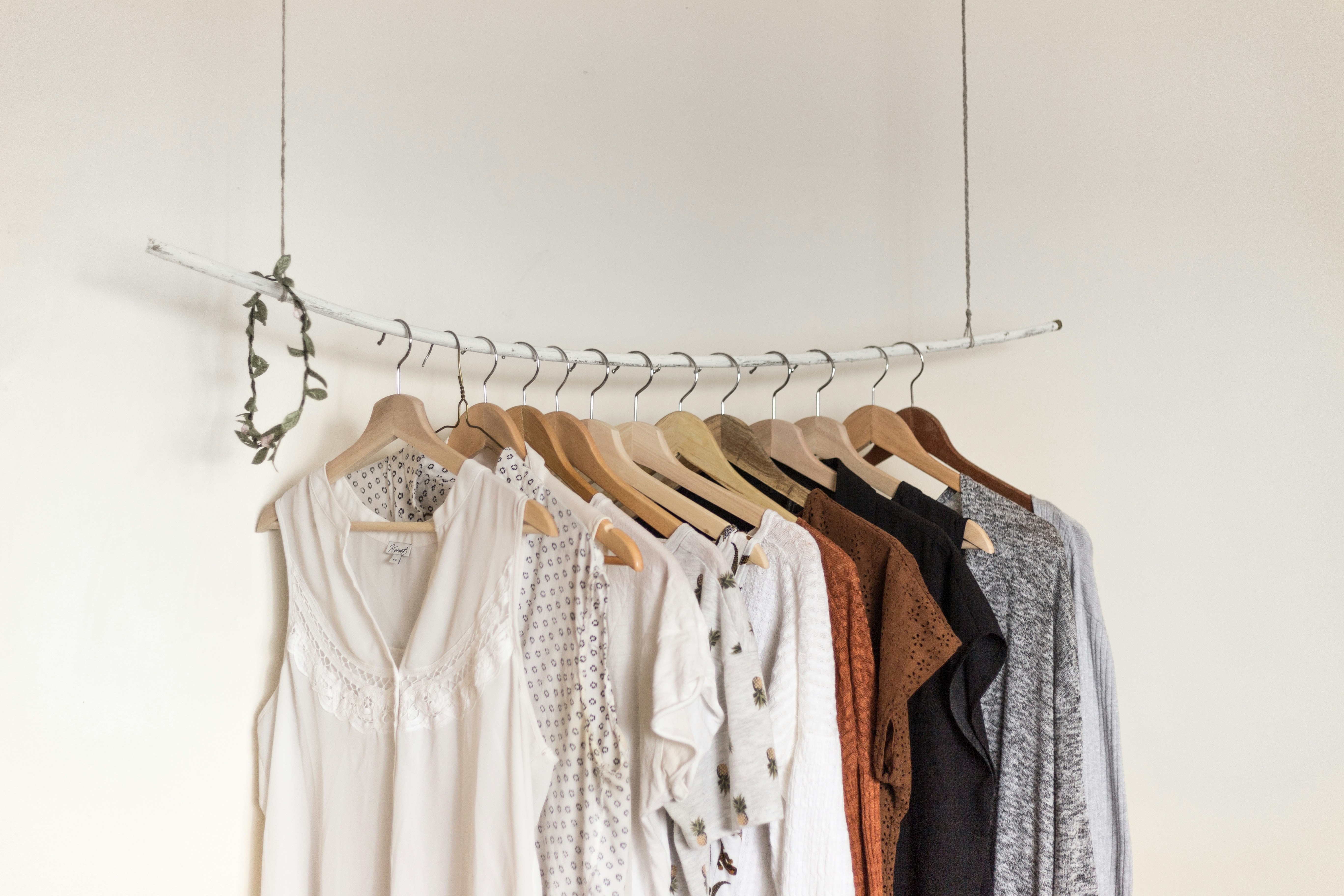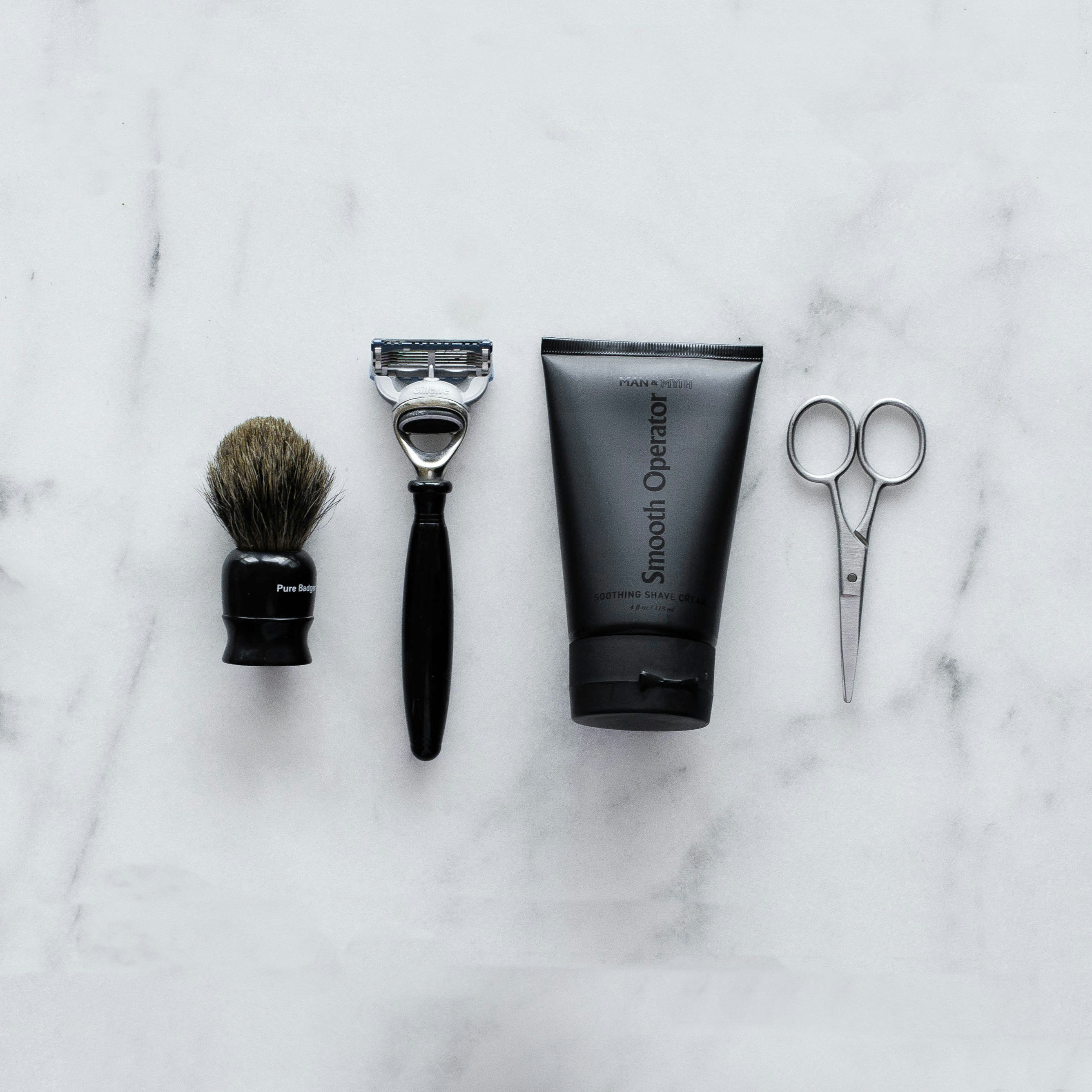Vintage Fashion Revival: How to Shop and Style Retro Pieces
Malik Mohsin Saleem Khan
July 18, 2023 · 14 min read

Introduction
The resurgence of vintage fashion represents one of the most significant and enduring trends in contemporary style. Beyond mere nostalgia, this revival reflects a profound shift in how we think about clothing—embracing history, craftsmanship, and individuality in an era of mass production. Vintage pieces carry stories from previous decades, offering not just unique aesthetics but a connection to fashion heritage that transcends the disposable nature of today's fast fashion landscape.
This comprehensive guide explores the art of shopping for and styling vintage clothing, providing practical advice for incorporating retro pieces into a modern wardrobe. From identifying quality finds and understanding historical context to creating contemporary looks with vintage elements, we'll navigate the rich world of fashion's past to enhance your present style while making environmentally conscious choices.
The Renaissance of Vintage Fashion
While appreciation for clothing from previous eras has always existed among collectors and fashion enthusiasts, the mainstream revival of vintage fashion has accelerated dramatically in recent years. This renaissance stems from converging cultural, economic, and environmental factors that have transformed vintage from a niche interest to a significant market force.
Historically, vintage clothing—typically defined as high-quality pieces from the 1920s through the 1990s—moved in cycles of revival, with each generation rediscovering and reinterpreting styles from 20-30 years prior. However, today's vintage renaissance differs in its breadth and depth, embracing multiple eras simultaneously while appreciating original pieces rather than merely drawing inspiration for new designs. According to ThredUp's 2021 Resale Report, the secondhand market is projected to double to $77 billion by 2025, with vintage clothing representing a significant segment of this growth.
Several factors drive this unprecedented interest in fashion's past. Sustainability concerns have prompted many consumers to seek alternatives to environmentally damaging fast fashion, with vintage representing the ultimate form of recycling. Simultaneously, social media platforms like Instagram and TikTok have democratized vintage education and discovery, with influencers and everyday users showcasing unique finds and styling approaches. The desire for individuality in an increasingly homogenized retail landscape further fuels vintage's appeal, as these one-of-a-kind pieces offer guaranteed uniqueness in a world of mass-produced trends.
The Art of Vintage Shopping: Finding Hidden Gems
Successful vintage shopping combines knowledge, patience, and a trained eye. Whether exploring physical stores or navigating online marketplaces, understanding how to identify quality pieces and recognize value separates casual browsers from serious vintage collectors. This section explores strategies for finding exceptional vintage items across various shopping channels.
Physical vintage stores remain treasure troves for dedicated shoppers, offering the irreplaceable experience of tactile discovery. Cities with vibrant vintage scenes include New York, London, Paris, and Tokyo, though remarkable shops exist in most urban areas. When shopping in person, develop relationships with store owners who can alert you to new arrivals matching your interests. Visit regularly, as inventory turns over quickly, and explore beyond obvious commercial districts—some of the best vintage stores thrive in residential neighborhoods or smaller towns with lower overhead costs.
Online platforms have democratized vintage shopping, making rare pieces accessible regardless of location. Each platform offers distinct advantages:
- Etsy excels for curated vintage from dedicated sellers, with robust search filters for era, style, and size
- eBay offers vast selection and auction opportunities, rewarding search expertise and patience
- Depop and Poshmark feature more affordable vintage with contemporary styling, popular among younger consumers
- Specialized platforms like Vestiaire Collective and 1stDibs focus on authenticated luxury vintage with corresponding price points
"Vintage shopping is like archaeology—you're excavating history, uncovering treasures that tell stories about their era, and giving them new life in the present." — Iris Apfel, fashion icon
Thrift stores, estate sales, and flea markets offer vintage at lower price points for those willing to search extensively. These venues require more digging but can yield remarkable finds, particularly in wealthy areas where quality items are more frequently donated. Develop a scanning strategy focusing on fabric quality, construction details, and unusual prints or buttons that might indicate a special piece among the ordinary.
When evaluating potential purchases, examine items thoroughly for condition issues. Minor flaws like loose buttons or small stains are easily remedied, while structural damage to fabric or significant alterations may be prohibitive. Always check seams, underarms, and high-friction areas for wear. For online purchases, request additional photos of any areas of concern and detailed measurements, as vintage sizing differs significantly from contemporary standards.
Identifying Eras and Styles: A Vintage Fashion Timeline
Developing an understanding of fashion history enhances both the shopping experience and styling potential of vintage clothing. Each decade has distinctive silhouettes, fabrics, construction techniques, and design details that help identify when a piece was made. This knowledge not only aids in authentication but provides context that makes vintage more meaningful to wear and collect.
The 1920s represented a revolutionary break from previous fashion constraints, with women's clothing emphasizing a boyish silhouette characterized by dropped waistlines, straight shapes, and rising hemlines. Look for delicate beadwork, Art Deco geometric patterns, and the earliest examples of machine-made garments alongside handcrafted details. Due to their age and delicacy, authentic 1920s pieces are rare and typically expensive, requiring careful handling and storage.
The 1930s responded to the Great Depression with a return to femininity and a more conservative approach. Bias-cut dresses that elegantly draped the body became iconic, while shoulders widened slightly and waistlines returned to their natural position. Fabrics were often modest—cotton prints for daywear and rayon as an affordable silk alternative. Examine 1930s pieces for exceptional hand-finishing and subtle details that maximized style within economic constraints.
The 1940s were defined by World War II's influence, with military styling, fabric rationing, and practical silhouettes dominating the first half of the decade. Women's suits featured squared shoulders and knee-length skirts, while utility garments emphasized durability. Post-war, Christian Dior's "New Look" introduced dramatic full skirts requiring substantial fabric—a deliberate rejection of wartime austerity. Identifying markers include metal zippers, minimal embellishment, and creative material use reflecting rationing restrictions.
The 1950s embraced feminine excess with full circle skirts, nipped waists, and structured undergarments creating the decade's characteristic silhouette. Separates became increasingly popular, allowing for more versatile wardrobes. Look for high-quality construction, matching belt sets, novelty prints, and early synthetic fabrics like nylon and acrylic alongside natural materials. Excellent 1950s pieces remain relatively available and often feature practical design elements that translate well to contemporary wear.
The 1960s witnessed dramatic fashion evolution, from the early decade's Jackie Kennedy-inspired sophistication to the later years' youth-driven experimentation. Key identifiers include A-line shapes, bold geometric patterns, and progressively rising hemlines culminating in the iconic mini skirt. Synthetic fabrics dominated, with innovative materials like PVC and paper dresses reflecting the space-age aesthetic. Examine labels carefully, as mass production became more standardized during this period.
The 1970s embraced both natural and synthetic extremes—earthy bohemian styles with natural fibers contrasted with disco-era polyester and spandex. Silhouettes expanded with bell-bottoms, maxi dresses, and wide-collared shirts. Identifying characteristics include earth-tone color palettes, high waistlines, and platform shoes. The decade's diverse subcultures—from hippie to glam rock—created distinct fashion languages that continue to influence contemporary designers.
The 1980s celebrated excess with power dressing, bold colors, and exaggerated silhouettes. Shoulder pads, oversized proportions, and statement accessories defined the era's "more is more" aesthetic. Designer labels gained unprecedented importance, with visible logos becoming status symbols. The decade's well-made pieces offer excellent value in today's vintage market, though selective styling is key to avoiding costume-like appearances.
The 1990s, now fully vintage by most definitions, encompassed minimalism, grunge, and hip-hop influences. Early '90s pieces often featured clean lines and neutral palettes inspired by designers like Calvin Klein, while later years embraced logomania and athletic influences. The decade's styles remain highly wearable and increasingly collectible as nostalgia drives market interest.
Styling Vintage for Contemporary Life
The art of incorporating vintage pieces into a modern wardrobe lies in creating balance—honoring the item's history while ensuring the overall look feels relevant rather than costumey. With thoughtful styling, vintage clothing can become the most versatile and distinctive elements in your closet, suitable for everything from everyday wear to special occasions.
The most successful approach to vintage styling typically involves mixing eras and combining vintage with contemporary pieces. This creates visual interest while anchoring the look in the present. For example, pair a structured 1950s blouse with modern high-waisted jeans, or style a 1970s maxi dress with current minimalist accessories. According to celebrity stylist Karla Welch, who regularly incorporates vintage into red carpet looks, "The key is to never look like you're in costume—one statement vintage piece mixed with modern elements creates the perfect balance."
Consider these strategies for specific vintage categories:
- Vintage dresses often have distinctive silhouettes that make them statement pieces. Modernize by adjusting the hemline if appropriate, adding contemporary footwear like white sneakers or ankle boots, and choosing simple, modern jewelry. A structured jacket can transform a precious vintage dress into daywear.
- Vintage tops and blouses pair beautifully with modern bottoms. Try a 1970s peasant blouse with contemporary straight-leg jeans, or a 1980s silk blouse with tailored trousers. These combinations honor the vintage piece while creating a relevant silhouette.
- Vintage outerwear offers exceptional quality and distinctive details rarely found in contemporary pieces. A 1960s coat or 1990s leather jacket can elevate the simplest modern outfit while providing practical function.
- Vintage accessories represent perhaps the easiest entry point to retro style. A structured handbag, statement jewelry piece, or silk scarf adds character to otherwise contemporary outfits without requiring sizing considerations.
"Vintage is not about nostalgia but about reaching across time to connect with quality and individuality that transcends trends." — Cameron Silver, founder of Decades
Tailoring plays a crucial role in successful vintage integration. Many exceptional vintage pieces require slight modifications to achieve a contemporary fit or proportion. Simple adjustments—hemming a skirt, tapering oversized shoulders, or replacing dated buttons—can transform a piece's wearability while preserving its essential character. Develop a relationship with a skilled tailor who appreciates vintage construction and understands how to modify garments while respecting their integrity.
When styling vintage, pay special attention to hair, makeup, and accessories, as these elements significantly influence whether a look reads as costume or fashion. Generally, if wearing a distinctive vintage garment, keep hair and makeup contemporary rather than period-appropriate. This tension between old and new creates the sophisticated juxtaposition that defines successful vintage style.
Building a Vintage-Inspired Wardrobe: Practical Considerations
Creating a wardrobe that thoughtfully incorporates vintage requires strategic planning, careful maintenance, and consideration of how retro pieces complement your existing style. This section addresses practical aspects of building and maintaining a vintage collection that enhances your personal aesthetic while meeting everyday needs.
- Start with versatile foundation pieces: Begin your vintage collection with items that easily integrate into your existing wardrobe. Classic pieces like a well-cut blazer, a silk blouse, or a leather handbag offer immediate wearability while showcasing vintage quality. Look for items in neutral colors and timeless silhouettes that can be styled multiple ways before expanding to more statement pieces.
- Consider your lifestyle needs: Assess how vintage can realistically fit into your daily activities. If you work in a conservative environment, focus initially on subtle vintage elements like accessories or classic tailored pieces. For creative fields, bolder vintage statements may be appropriate. Ensure your vintage selections align with practical considerations like climate, comfort requirements, and care limitations.
- Identify your most flattering eras: Different vintage periods complement different body types and personal aesthetics. Experiment to discover which decades' silhouettes work best for your figure and align with your style preferences. Many people find they're drawn to specific eras that naturally enhance their features—whether it's 1950s shapes that define the waist, 1970s styles that elongate the body, or 1990s minimalism that creates clean lines.
- Develop a maintenance routine: Vintage clothing requires more careful handling than contemporary pieces. Invest in proper storage solutions including padded hangers for structured items, acid-free tissue for delicate pieces, and breathable garment bags that protect without trapping moisture. Learn basic care techniques appropriate to different materials:
- Hand wash delicate vintage using gentle detergents specifically formulated for historical textiles
- Spot clean structured pieces like wool coats and jackets rather than subjecting them to full cleaning when possible
- Air garments thoroughly after wearing before returning to storage
- Address small repairs immediately before they become larger problems
- Budget strategically: Allocate your vintage budget thoughtfully, investing more in exceptional foundation pieces while being opportunistic with trend-driven items. Consider cost-per-wear when evaluating purchases—a higher-priced, versatile vintage piece that you'll wear weekly offers better value than an inexpensive but limited item. Set price alerts on online platforms for specific designers or styles you're seeking, and develop relationships with vintage dealers who can notify you when desirable pieces become available.
When incorporating vintage into your wardrobe, consider creating signature combinations that become part of your personal style language. Perhaps you become known for your collection of vintage silk scarves styled with contemporary outfits, or your knack for finding exceptional vintage denim that you pair with modern tops. These signature elements help define your aesthetic while showcasing your unique vintage discoveries.
Remember that building a vintage collection is a gradual process that benefits from patience and selectivity. Unlike contemporary retail, where entire looks can be purchased at once, meaningful vintage wardrobes develop over time through careful curation and serendipitous finds. Embrace this slower approach to style building, allowing your collection to evolve organically as you discover pieces that truly speak to you.
The Future of Vintage Fashion
The vintage fashion market continues to evolve rapidly, with emerging trends suggesting significant shifts in how retro clothing is discovered, authenticated, valued, and integrated into contemporary style. Understanding these developments offers insight into both the future trajectory of vintage fashion and its growing influence on the broader fashion ecosystem.
Technology is transforming vintage shopping in unprecedented ways. Beyond established online marketplaces, innovations like artificial intelligence and augmented reality are creating new possibilities for vintage discovery and authentication. AI-powered search tools can now identify specific vintage pieces from photographs, while some platforms are developing virtual try-on features specifically calibrated for one-of-a-kind vintage items. Blockchain technology is beginning to address provenance verification, with startups creating digital passports for significant vintage pieces that track ownership history and authenticate rare items.
The definition of "vintage" itself continues to evolve, with Y2K fashion (approximately 1995-2005) now firmly established in the vintage category. This period's distinctive aesthetic—characterized by low-rise silhouettes, logomania, and technological influences—has particular resonance with Gen Z consumers who experience it as "found nostalgia" for an era they were too young to experience firsthand. According to fashion search platform Lyst, searches for specific Y2K items increased by 80% in 2021, with particular interest in brands like Ed Hardy, Von Dutch, and early 2000s Jean Paul Gaultier.
Sustainability concerns continue to drive vintage growth, with environmental awareness pushing more consumers toward pre-existing clothing. As fashion's environmental impact receives increasing attention, vintage represents not just a stylistic choice but an ethical one. This shift is influencing even luxury consumers, with auction houses like Christie's and Sotheby's expanding their vintage fashion offerings to meet growing demand for investment-grade archival pieces.
The relationship between vintage and contemporary design grows increasingly symbiotic. Major fashion houses are reissuing archive pieces in response to vintage popularity, while simultaneously drawing more explicit inspiration from their historical designs. Gucci's "Vault" project, which sells curated vintage Gucci alongside new designs, exemplifies this convergence of past and present. Meanwhile, emerging designers increasingly reference specific vintage eras and subcultures, creating new interpretations that drive interest in the original sources.
Conclusion
The revival of vintage fashion represents far more than a passing trend—it reflects a fundamental reconsideration of clothing's role in our lives and culture. By embracing garments from previous eras, we connect with fashion history, celebrate exceptional craftsmanship, express individuality, and make environmentally conscious choices. The skills of finding, styling, and caring for vintage pieces reward us with a wardrobe that transcends the limitations of contemporary mass fashion.
The beauty of vintage lies in its democratic nature—available at virtually every price point and adaptable to any personal style. Whether you're drawn to the structured elegance of 1950s tailoring, the expressive freedom of 1970s bohemia, or the minimalist cool of 1990s design, vintage offers authentic expressions of these aesthetics that can be reinterpreted through a contemporary lens.
As we look toward fashion's future, vintage will likely play an increasingly important role in how we build our wardrobes and express our values. In a world of mass production and accelerating trends, these pieces from the past offer something increasingly precious: uniqueness, quality, and the stories woven into their very fabric. By learning to shop for and style vintage effectively, we gain not just distinctive garments but a deeper appreciation for fashion as both creative expression and cultural artifact—one that continues to evolve while honoring what came before.
Frequently Asked Questions
What's the difference between vintage, retro, and antique clothing?
These terms have specific meanings in the fashion world. Vintage typically refers to high-quality garments that are 20-100 years old (currently 1920s-early 2000s), representing the authentic fashion of their era. Retro describes new clothing made to look like older styles—reproductions rather than originals. Antique applies to items over 100 years old (currently pre-1920s), which are often too fragile for regular wear and may be considered collectibles or museum pieces. While vintage clothing is meant to be worn, antique pieces generally require special handling and conservation.
How do I care for delicate vintage pieces?
Proper care extends the life of vintage garments. Always air items after wearing before storing to release moisture and odors. Clean according to material and construction—many vintage pieces should be hand washed with gentle detergents or carefully dry cleaned by specialists familiar with historical textiles. Store in acid-free tissue in a cool, dry place away from direct sunlight, using padded hangers for structured garments. Address small repairs immediately before they worsen, and find a tailor experienced with vintage construction techniques. For very delicate pieces, consider wearing undergarments that create a barrier between the vintage fabric and your skin.
How can I authenticate vintage designer pieces?
Authentication involves examining multiple elements. Study the label's font, material, and stitching, comparing to known examples from the same era (online archives and reference books are helpful). Check construction details like zippers (certain brands were used in specific decades), seam finishing, and fabric quality. Examine hardware like buttons and clasps, which often feature brand markings. For significant purchases, consider professional authentication services or buy from reputable dealers who guarantee authenticity. Remember that designer labels have evolved over time, so a vintage Dior label will look different from a contemporary one.
Is vintage clothing sized differently than modern clothing?
Yes, vintage sizing differs significantly from contemporary sizing, and varies by era and country of origin. Generally, vintage clothing runs 2-4 sizes smaller than modern equivalents—a vintage size 12 might correspond to a modern size 6-8. Never rely on the size label; always check actual measurements. Essential measurements include bust/chest, waist, hips, shoulder width, and garment length. For online purchases, ask sellers for these specific measurements and compare to a similar item you own that fits well. Remember that some vintage pieces were designed to be worn with foundation garments that created different body shapes than are common today.
Where can I sell my vintage clothing?
Several options exist depending on your items' value, rarity, and your time investment. Consignment stores offer physical locations and handle sales but take 40-60% commission. Online marketplaces like Etsy and eBay reach wider audiences but require more effort in listing, shipping, and customer service. Specialized platforms like Vestiaire Collective and 1stDibs are ideal for designer vintage but have strict acceptance criteria. For exceptional pieces, auction houses now include vintage fashion in their sales. Research comparable items to price appropriately, and provide detailed measurements, clear photos, and accurate condition descriptions to attract serious buyers.
Malik Mohsin Saleem Khan
Founder
Author bio information


